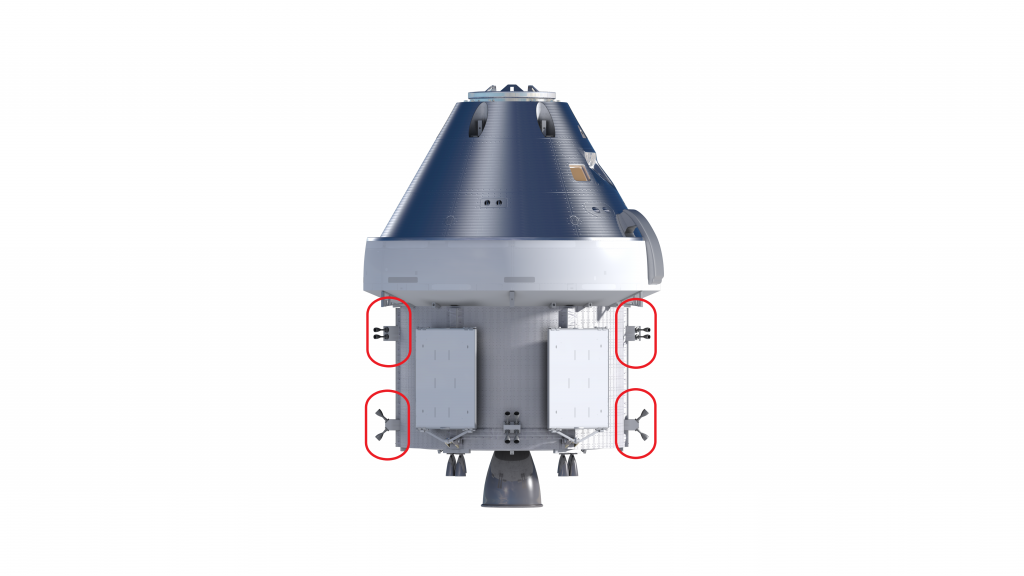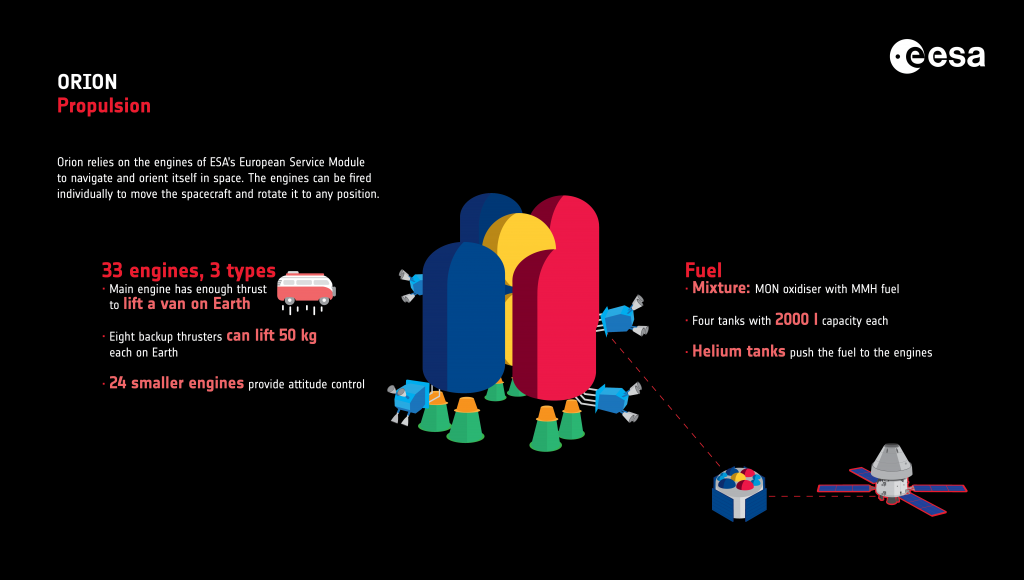On the eighth day of its mission, 23 November 2022, Orion continued to travel farther away from the Moon as it prepares to enter a distant retrograde orbit. The orbit is “distant” in the sense that it’s at a high altitude from the surface of the Moon, and it’s “retrograde” because Orion will travel around the Moon opposite the direction the Moon travels around Earth.
Orion exited the gravitational sphere of influence of the Moon November 23 at 04:49 CET (03:49 GMT) when 64362 km from the lunar surface. The spacecraft will reach its farthest distance from the Moon on 25 November just before the European Service Module performs the lunar orbit burn. The distant retrograde orbit requires minimal fuel consumption while traveling around the Moon.

While heading to the distant retrograde orbit insertion point, engineers conducted the first part of a propellant tank slosh flight test, called prop slosh, which are scheduled during quieter parts of the mission. The test calls for flight controllers to fire the European Service Module’s reaction control system thrusters with the propellant tanks filled at different levels. Engineers will measure the effect the liquids sloshing around in the tanks has on the spacecraft heading and orientation as Orion moves through space. The test is performed after the outbound flyby burn and again after the return flyby burn to compare data at points in the mission with different levels of propellant onboard.

Propellant motion, or slosh, in space is difficult to model on Earth because liquid propellant moves differently in tanks in space than on Earth due to the lack of gravity. Propellant slosh is an important part of all mission and rocket design and France’s space agency CNES has run experiments into this phenomenon on the International Space Station, as demonstrated by ESA astronaut Thomas Pesquet:
The reaction control thrusters are located on the sides of the service module in six sets of four. These engines are in fixed positions and can be fired individually as needed to move the spacecraft in different directions or rotate it into any position. Each engine provides about 220 N of thrust.
Unexpected loss of signal
Mission Control Center at NASA’s Johnson Space Center in Houston, USA, unexpectedly lost data to and from Orion at 19:09 CET (18:09 GMT) for 47 minutes while reconfiguring the communication link between Orion and Deep Space Network. The reconfiguration was conducted several times over the last few days, and the team is investigating the cause of this loss of signal. The team resolved the issue by reconfiguring the ground side. Engineers are examining data from the event to help determine what happened, and the command and data handling officer will be downlinking data recorded on Orion during the outage to include in that assessment. There was no impact to Orion, and the spacecraft remains in good health.
Fuel levels
As of November 23, a total of about 1800 kg of propellant has been used, about 67 kg less than expected before launch. Just after 20:00 CET (19:00 GMT) on 23 November Orion was traveling about 341 884 km from Earth and was more than 77 351 miles from the Moon, cruising at over 4565 km/h.


 Automated Transfer Vehicle page
Automated Transfer Vehicle page ATV blog archive
ATV blog archive
Discussion: no comments